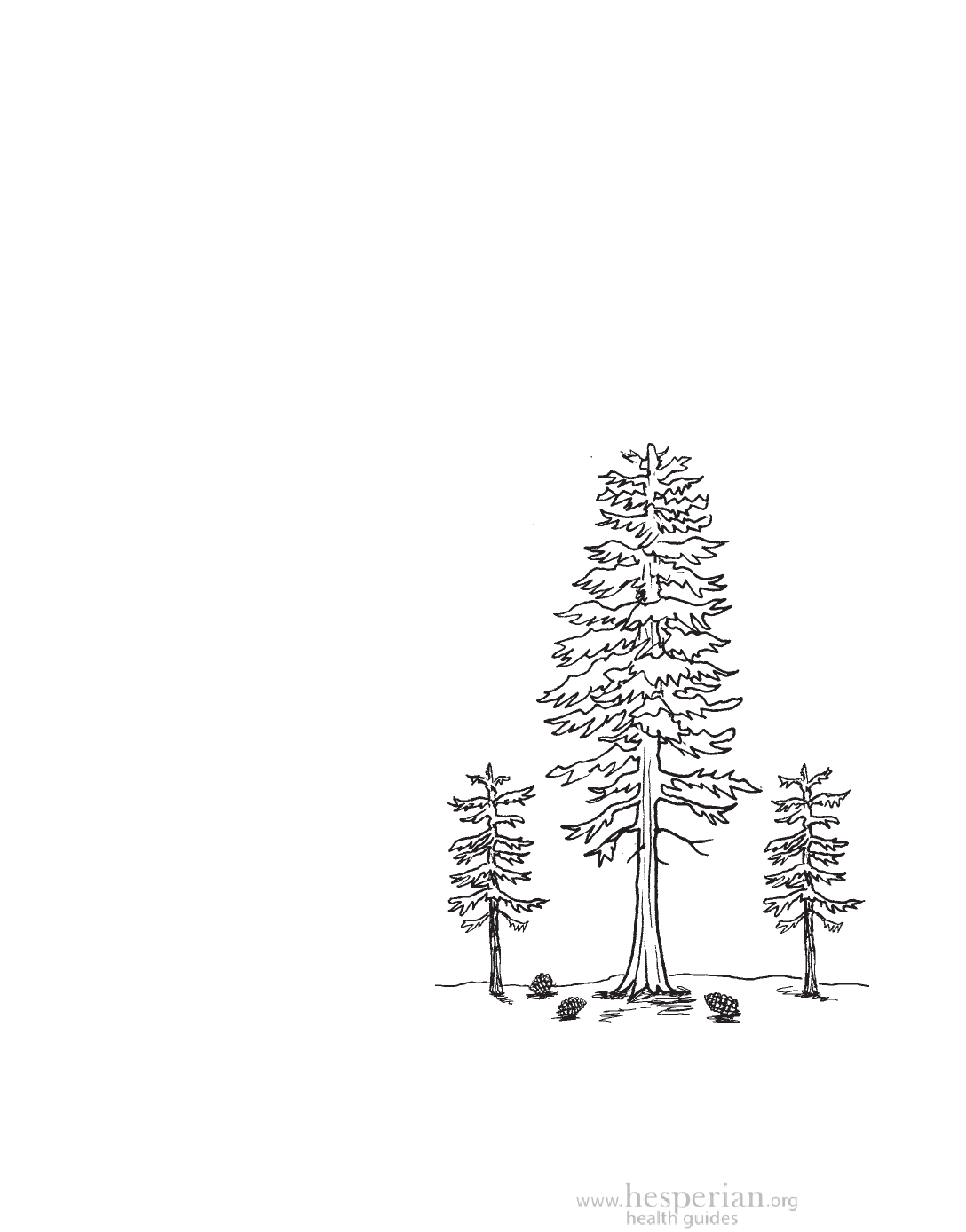
2 06 R e s to r i n g L a n d a n d Pl a n t i n g Tr ee s
Planting Trees
Under the right conditions, planting trees helps restore damaged lands and
provide firewood, timber, food for people and for animals, and medicine.
Planting trees can make land that is poor and barren become rich and fertile
again. But trees planted in harsh conditions need care to grow well. Tree
planting has many benefits, but it is not right for all areas or all communities
(see page 191 for an activity that can help decide whether to plant trees).
There are several ways to grow trees:
• Plant seeds or cuttings (pieces of a branch) directly into the ground (see
page 207).
• Collect and transplant wild seedlings
(see page 208).
• Grow tree seedlings in a nursery and
then transplant them into the ground
(see page 209).
• Graft (attach) a cutting from a tree you
want onto the root stock of another tree.
(Grafting is usually used to grow fruit
trees and is not covered in this book.)
The method you choose depends on what
trees you want to plant, and what seeds
or cuttings are available.
Selecting seeds or cuttings
Many people have sayings such as,
“Like the parent, so will be the child.”
Just as a child whose parents are
tall will also likely grow tall, a
tree seedling whose “parent”
has a straight trunk that is good
for lumber, or produces useful
medicine, is likely to share those
same qualities. It is best to collect
seeds or cuttings from parent
trees that are healthy and have
the qualities you want. If you
cannot collect seeds in your area,
you may be able to get seeds
from an extension agent, or from
a nursery or garden in a nearby town.
A Community Guide to Environmental Health 2012